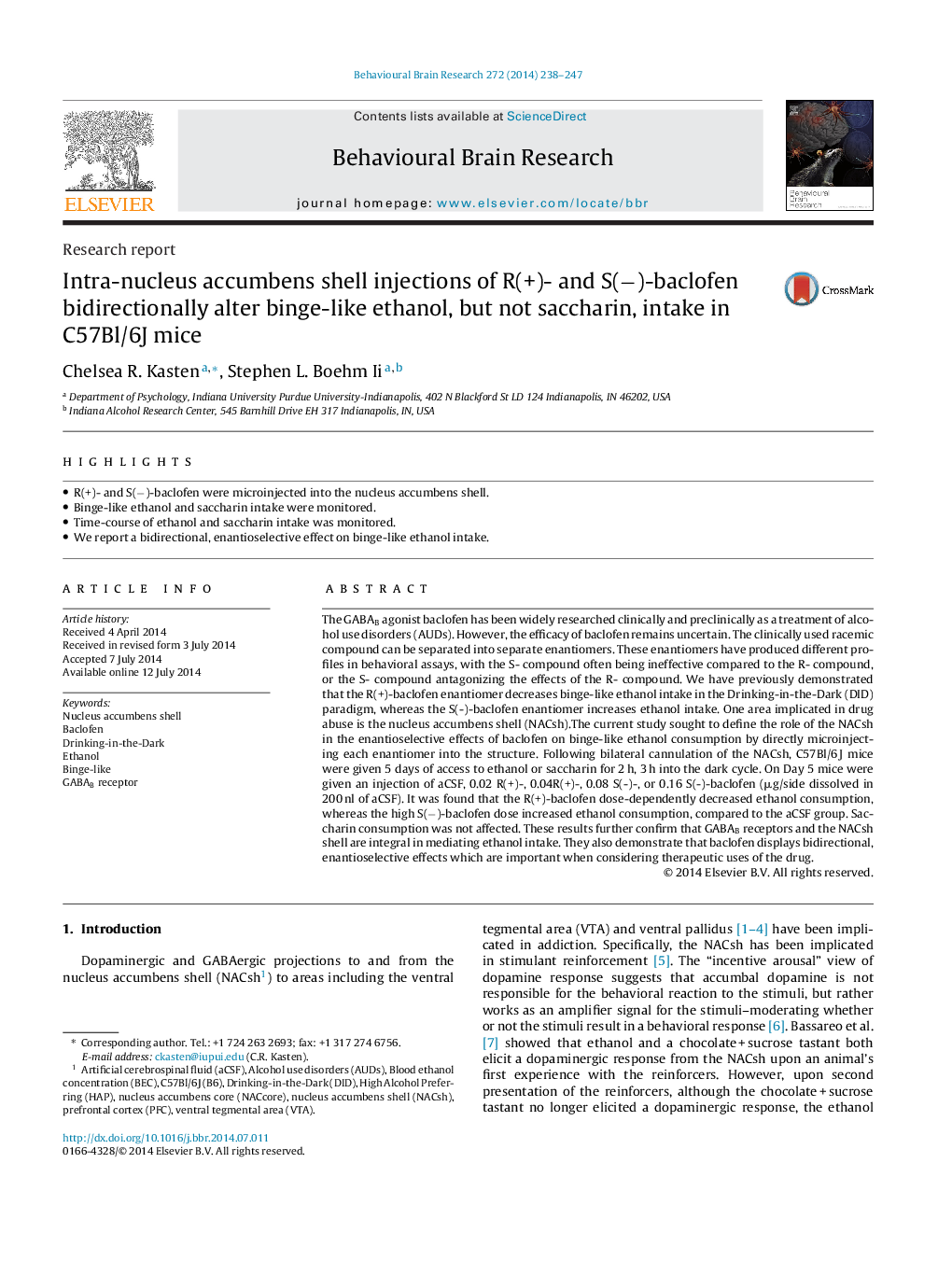| کد مقاله | کد نشریه | سال انتشار | مقاله انگلیسی | نسخه تمام متن |
|---|---|---|---|---|
| 6257515 | 1612960 | 2014 | 10 صفحه PDF | دانلود رایگان |

- R(+)- and S(â)-baclofen were microinjected into the nucleus accumbens shell.
- Binge-like ethanol and saccharin intake were monitored.
- Time-course of ethanol and saccharin intake was monitored.
- We report a bidirectional, enantioselective effect on binge-like ethanol intake.
The GABAB agonist baclofen has been widely researched clinically and preclinically as a treatment of alcohol use disorders (AUDs). However, the efficacy of baclofen remains uncertain. The clinically used racemic compound can be separated into separate enantiomers. These enantiomers have produced different profiles in behavioral assays, with the S- compound often being ineffective compared to the R- compound, or the S- compound antagonizing the effects of the R- compound. We have previously demonstrated that the R(+)-baclofen enantiomer decreases binge-like ethanol intake in the Drinking-in-the-Dark (DID) paradigm, whereas the S(-)-baclofen enantiomer increases ethanol intake. One area implicated in drug abuse is the nucleus accumbens shell (NACsh).The current study sought to define the role of the NACsh in the enantioselective effects of baclofen on binge-like ethanol consumption by directly microinjecting each enantiomer into the structure. Following bilateral cannulation of the NACsh, C57Bl/6 J mice were given 5 days of access to ethanol or saccharin for 2 h, 3 h into the dark cycle. On Day 5 mice were given an injection of aCSF, 0.02 R(+)-, 0.04R(+)-, 0.08 S(-)-, or 0.16 S(-)-baclofen (μg/side dissolved in 200 nl of aCSF). It was found that the R(+)-baclofen dose-dependently decreased ethanol consumption, whereas the high S(â)-baclofen dose increased ethanol consumption, compared to the aCSF group. Saccharin consumption was not affected. These results further confirm that GABAB receptors and the NACsh shell are integral in mediating ethanol intake. They also demonstrate that baclofen displays bidirectional, enantioselective effects which are important when considering therapeutic uses of the drug.
Journal: Behavioural Brain Research - Volume 272, 1 October 2014, Pages 238-247